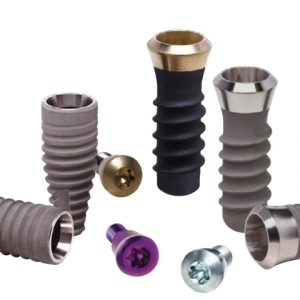Best Option For Different Patient Needs
- What are dental prostheses used for?
- How do they differ from dental implants?
- Which dental prosthesis is the best option for different patient needs, and what options do we stock and distribute?
What Are Dental Prostheses Used For?
 As you know, a dental prosthesis is an intraoral artificial device that replaces a single missing tooth or missing teeth. Prosthetics is a term for a range of dental appliances that includes veneers, crowns, and bridges, as well as partial dentures and complete dentures.
As you know, a dental prosthesis is an intraoral artificial device that replaces a single missing tooth or missing teeth. Prosthetics is a term for a range of dental appliances that includes veneers, crowns, and bridges, as well as partial dentures and complete dentures.
How Do They Differ From Dental Implants?
Dental prostheses and dental implants often get confused, but when considering the best option for your patient’s needs, reminding yourself of the key differences is crucial. These are:
- Dental implants are attached to a patient’s jawbone, whereas dental prostheses aren’t.
- The patient’s soft tissues and surrounding teeth support the dental prostheses, whereas dental implants are supported by the jawbone.
- Dental implants are used to attach the dental prosthetics to the patient’s tooth root.
Which Dental Prosthesis Are The Best Option For Different Patient Needs, And What Options Do We Stock And Distribute?
As you will already know:
- Dental bridges are used to fill in any gaps left by a few missing teeth, which they do by anchoring to adjacent teeth, any remaining teeth or dental implants.
- Partial dentures, fixed dentures, and removable dentures are false teeth that replace multiple of all missing teeth.
- Dental crowns cover decayed or damaged teeth.
- Veneers are shells or artificial teeth, designed to look like natural teeth that cover chipped or discoloured teeth to improve aesthetic appearance and give the impression of fully healthy teeth.
- Dental implants, designed to behave like real teeth, replace missing tooth roots, which allows them to support prosthetics such as implant-supported bridges and crowns.
Whilst all these common types of fixed prostheses and removable dental prostheses have different benefits depending on a patient’s needs and oral health, all have preventative benefits, particularly dental implants. This is because they help reduce the risk of further bone loss, gum disease, cavities, jaw deterioration and tooth loss.
At J&S Davis, we offer two types of dental implants that aid in the attachment of dental prosthetics to a patient’s tooth root or jawbone. These are tissue- and bone-level dental implants from our trusted partner, Meisinger, a pioneer in dental prosthetics, CAD-CAM dentistry, and other high-quality solutions. These two types of dental implants have different purposes:
Bone-Level Dental Implants: These are favoured for bone-level restorations, particularly where two-phase procedures are required.
Tissue-Level Dental Implants: Tissue-level implants are typically used for trans or subgingival healing at the soft tissue level. They are favoured for situations where patients have experienced bone loss or have a lower bone density or volume, and for posterior teeth where aesthetic results aren’t as critical.
For more information about any of the Meisinger bone and tissue-level dental prosthesis we stock and distribute, or any of the other products we offer, please click here to contact us or call our team of experts on 01438 747344. You can also find out more about Meisinger’s full range of dental prosthesis provided by J&S Davis by visiting our Meisinger distribution site.
